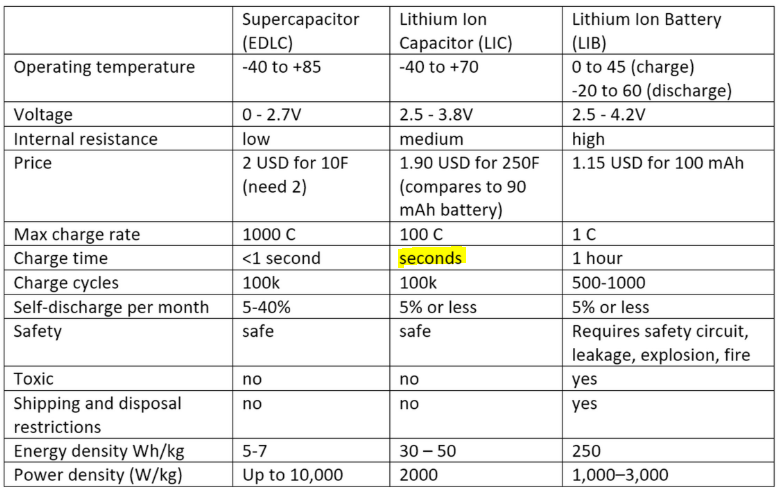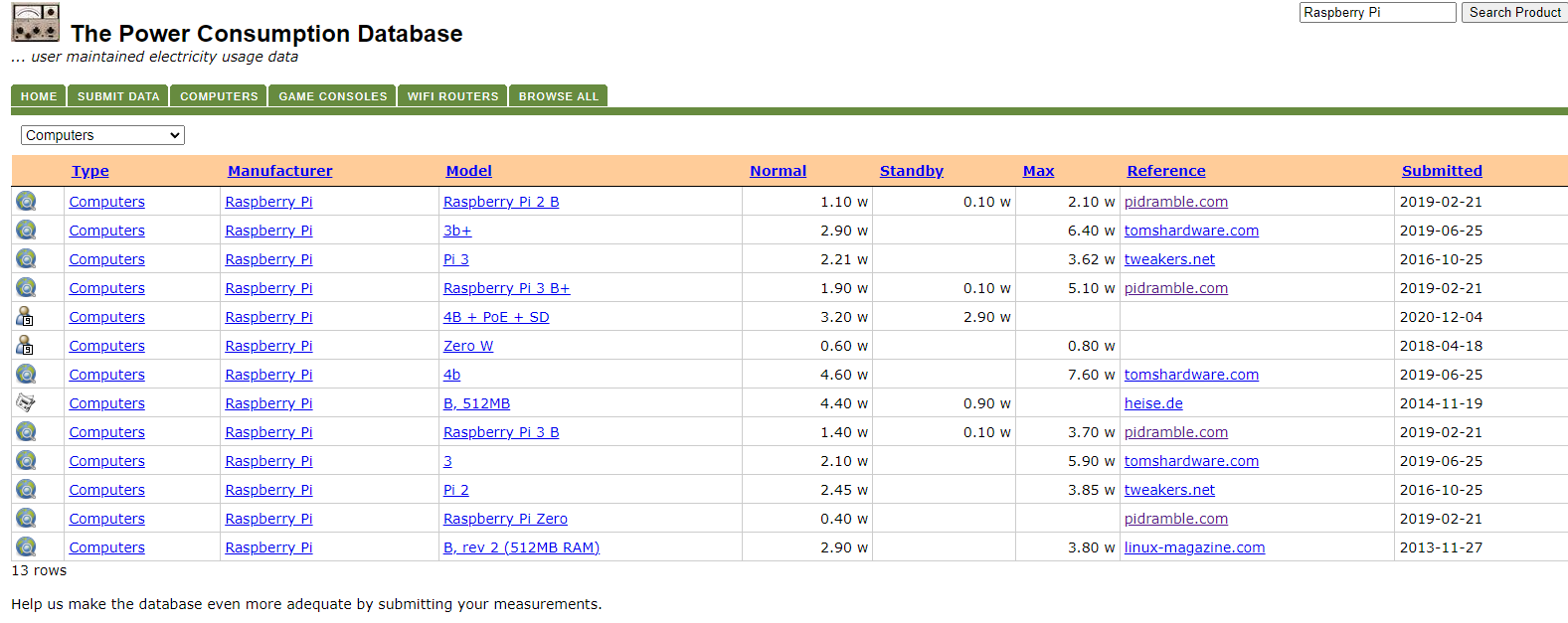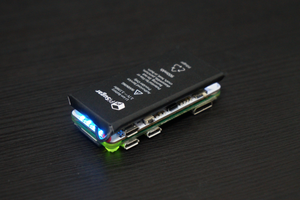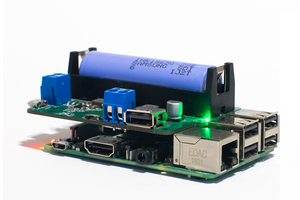https://www.newark.com/vinatech/vel08203r8306g/lithium-ion-capacitor-30f-3-8v/dp/38AJ2228
https://www.tindie.com/products/jaspersikken/solar-harvesting-into-li-ion-battery/ :

from https://www.jeffgeerling.com/blogs/jeff-geerling/raspberry-pi-zero-power:
"In the past, for the Pi Dramble project, I've measured power consumption for all the other Pi models I own (A+, B+, and model 2), so I thought I'd use my PowerJive USB Power Meter to measure the usage for the Zero for comparison:
| Pi Model | Pi State | Power Consumption |
|---|---|---|
| A+ | Idle, HDMI disabled, LED disabled | 80 mA (0.4W) |
| A+ | Idle, HDMI disabled, LED disabled, USB WiFi adapter | 160 mA (0.8W) |
| B+ | Idle, HDMI disabled, LED disabled | 180 mA (0.9W) |
| B+ | Idle, HDMI disabled, LED disabled, USB WiFi adapter | 220 mA (1.1W) |
| model 2 B | Idle, HDMI disabled, LED disabled | 200 mA (1.0W) |
| model 2 B | Idle, HDMI disabled, LED disabled, USB WiFi adapter | 240 mA (1.2W) |
| Zero | Idle, HDMI disabled, LED disabled | 80 mA (0.4W) |
| Zero | Idle, HDMI disabled, LED disabled, USB WiFi adapter | 120 mA (0.7W) |
As you can see in the table above, the Zero uses a similar amount of power as the long-time power-sipping champ, the A+—both use less than half the power of any other more fully-equipped Pi. This is no doubt due to the lack of extra ports and circuits that are active on the Pi itself. This means that a small battery pack (say, a flat Li-Ion pack rated at 1,400 mAh) should last well over 4 hours, even if you have moderate activity while using a cheap USB WiFi dongle!"
My other project is a deliberation page to establish an interoperable standard, so it is more of a place to post links and concepts that could be used as candidate components. Some of these links and tables are posted on that page as well, but this page is designed to focus on a specific test to complement that project. It is based on PowerFilm Solar's Bluetooth Beacon test, that used small solar panels to routinely charge a capacitor (within seconds), which would then power a microcontroller that would send a bluetooth signal:
In this project, I am replacing the bluetooth beacon with a Raspberry Pi Zero. Ideally, I could use a single 5V Li-Ion Capacitor to power the Raspberry Pi Zero, rather than two 2.5V-3.7V ones (which may cause the operating voltage to exceed 5.5V!)
Another ideal would be to design a Single Board computer/embedded motherboard with a Cortex-A processor -application series such as the ARM11-based Raspberry Pi Zero, but powered by dual supply voltages, similar to the SparkFun Artemis (3.3V and 5V).
The theory is, that if a Li-Ion Capacitor (LIC) is rated for 100K cycles, then, even 10 recharges a day would suggest it could last 25+ years. Using daylight, there are typically 6-8 hours of sunlight on a good day. Timing and designing an SBC with an appropriately sized LIC would allow it to minimize the need for excess capacity (e.g. a 250F/90mAh equivalent) and use a 150F capacity LIC- i,e. 54mAh. If one wanted to recharge it only 8 times a day, assuming the LIC with a solar panel and charge manager would need only seconds in sunlight, it would only need to be charged once an hour. 365 days a year, for 25 years is 73,000 charge cycles. Obviously no one would see the need to have that regiment, but it gives a ballpark idea of what is possible. 54mAh is also means a device running at 54mA can only run for one hour. A Sparkfun Artemis idling is going to use around .9mA thus it can run consistently for over 54 hours (2 days+) on just 150F.
A Raspberry Pi Zero in idle, with LED and HDMI disabled uses around 80mA. That means on a 150F (54mAh) LIC, it will only last 40.5 minutes. Idling, especially without peripherals such as USB & Wifi, won't be very practical, but that will be examined later.
from https://www.tpcdb.com/list.php?page=1&order=1&sort=manufacturer&type=13&query=Raspberry+Pi:

The Pi Zero in Active state uses around 0.5W (100mA, or 500mW). On a 54mAh "battery"...
Read more » Giovanni
Giovanni
 Jdaie
Jdaie
 tonyjanugrah
tonyjanugrah
 andriy.malyshenko
andriy.malyshenko
 Jacob Daniels
Jacob Daniels